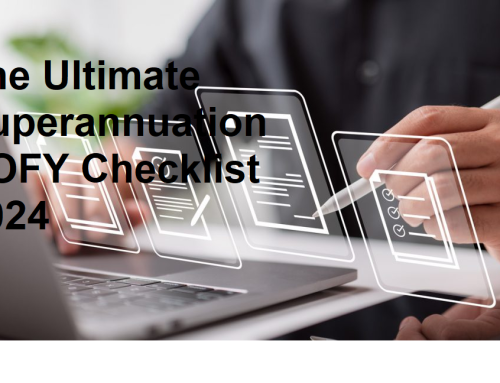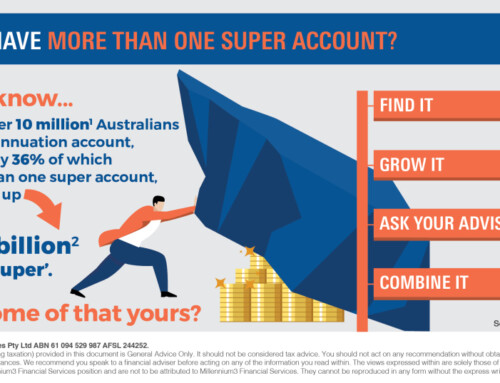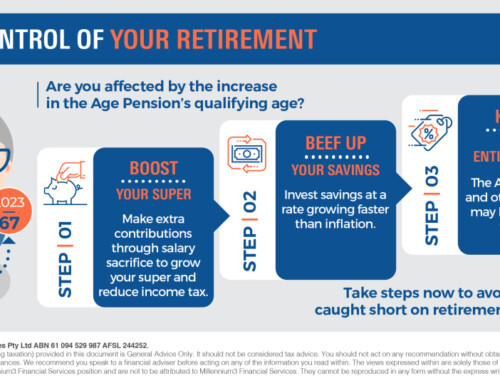In the ever-changing super landscape, new tax breaks often arise as governments attempt to create incentives to encourage people to self fund for retirement and then to utilise their super to create income streams that will last well into retirement. One such opportunity is the ‘transition to retirement’ rule aimed at the over 55’s. The transition concept is a significant shift from the old ‘work full time until you retire’ model. The transitional paradigm recognises that many may prefer to ease into retirement gradually by cutting back working hours and drawing some income from their super before they fully retire.
Extra savings there for the taking
Bruce Jennings from Jennings Financial Services is spending an increasing amount of time helping pre-retirees to take advantage of this transitional environment. “My clients are pleasantly surprised when they discover the additional retirement savings that can be achieved in the 10 year period leading up to retirement. In fact it is quite startling to think that many people will go all the way to retirement blissfully unaware of the thousands of dollars in potential retirement savings that they are passing up”. At the centre of the transitional regime is an investment vehicle known as a ‘Transition to retirement account based pension’. Super monies you have accumulated can be converted into this vehicle up to ten years prior to retirement (depending on your date of birth). This then pays you a set regular income stream to supplement earned income.
Pay no tax on earnings within super
One of the attractions of commencing a transition to retirement pension is the tax break on earnings, as Bruce explains. “Perhaps the most significant benefit comes from the fact that once you are in an account based pension, all your investment earnings are tax free. This can make a massive difference to building your super balance in the years leading up to retirement”. “The income stream itself also has tax concessions. For those under age 60, you can offset your income tax by an amount equal to 15% of the pension income amount, so someone who is drawing an income stream of, say, $10,000 a year will be able to take $1,500 off their income tax bill. For those over age 60, the pension income is entirely tax-free”.
Different strategies meet different needs
Bruce also outlined some creative ways the transition to retirement rules can be used. “One popular strategy for those intending to continue working full time up to retirement is to restructure income by salary sacrificing earned income into super and replacing this income with income from an account based pension.” “The pension income balances out the salary sacrifice contributions, so that net take home income remains unchanged. In particular for those over age 60, this strategy reduces taxable income. Combined with tax free investment earnings and the potential 15% tax offset, the bottom line is that super accumulation is accelerated with no net change in cashflow”.
Bruce added that an account based pension can also be used as a means of going into semi retirement without any drop in income. Some also use it to help pay off their mortgage sooner, rather than waiting to pay it off after they retire. This can save thousands in interest payments and leave them in a much better net position when they retire.
If you are interested in seeing how a transition strategy can work for you, contact Bruce from Jennings Financial Services for further information.
Ph: 02 9369 1604
email: bruce@jenningsfs.com.au







Leave A Comment